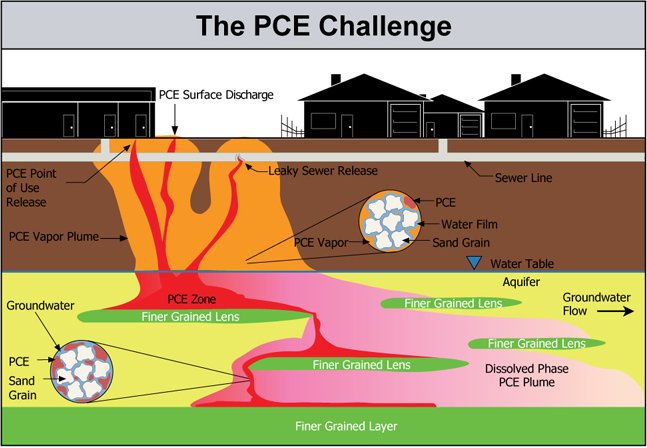The Health Hazards of Dry Cleaning
Are you aware dry cleaning can have detrimental effects to the environment? Perchloroethylene also known as tetrachloroethylene, perc and PCE, is a solvent widely used in dry cleaning due to it not being flammable. In June of 2022, the Environmental Protection Agency (EPA) issued a revised risk evaluation of perchloroethylene. The evaluation states that “perchloroethylene presents an unreasonable risk of injury to human health under its conditions of use”. Perchloroethylene has the ability to not only impact air quality but also water quality.
Basics of Perchloroethylene
Perchlorethylene is a volatile organic compound (VOC). VOCs are organic compounds that are not stable at room temperature and standard pressure and thus become volatile (vapor). PCE belongs to a group of VOCs known as chlorinated solvents. These compounds are organic compounds that are bound to the element chlorine. Chlorinated solvents such as PCE are coveted for their degrassing and solvent properties. According to the EPA, PCE is denser than water and will often sink to the lower levels of aquifers as it is carried by groundwater. PCE is used in dry cleaning and various industrial processes for degreasing. PCE exposure risk is typically higher with workers who utilize this compound.
The EPA’s new risk evaluation states that personal protection equipment (PPE) may not be enough to protect workers. PCE can impact workers in close proximity, and from afar. Indoor Science has even noted an instance where PCE was found in soil over a mile away from an industrial facility with poor handling practices. Exposure to PCE has been linked to liver toxicity, neurotoxicity, reproduction impacts, and kidney toxicity, among many health effects. The EPA classifies PCE as carcinogenic.

Environmental Contamination of PCE: Vapor Intrusion & Ground Water
Outside of direct exposure workers face, PCE vapor can impact properties further away. This process is called vapor intrusion. This process refers to the migration of volatile chemicals which travel from the groundwater or soil into the building above it. PCE is often released into the environment by industrial spills, poor handling, improper removal down drains, and industrial processes. VOCs which leak into the soil form a plume of soil gas. The volatiles can migrate through porous layers of soil and eventually can contaminate the groundwater. As VOCs are volatile in nature they can migrate from the soil or groundwater upward and can infiltrate through foundation cracks or via utility lines.
In 2015, the EPA reported that 27 facilities released 65 million pounds of PCE into the environment. Over 63% of the releases were in the air. The EPA also reported that PCE was detectable in 77% of ambient air samples collected in its national air monitoring program. Releases of PCE in the water allows it to enter drinking water sources. The EPA also notes that exposure is linked to proximity to urban or industrialized areas rather than rural areas.
Conclusions
PCE can cause various environmental impacts due to environmental releases, poor handling, and poor protection controls in the workplaces. If you have concerns about PCE impacting your property, consider hiring an environmental consultant such as Indoor Science to evaluate your situation.
 877-872-4339
877-872-4339  Contact Us
Contact Us 






